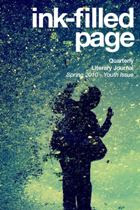What do you think of this sentence?
He ate a lot that day: Fritos, a frozen pizza, a box of Klondike bars, Laffy Taffy, plain cake doughnuts, a club sandwich, and a jar of pickles.
Do you appreciate it for its presentation of information by way of concrete images? Or does it seem superflous to specify what this person ate?
Let's take a minute to think about the "list sentence." I don't have a definite answer, this is more of an awareness piece.
Lists can be a way to juxtapose feelings and themes, as in, "She sat at the edge of a small cliff, surrounded by ivy, evergreens, moss, small birds and looked down at shopping carts, beer cans, tires and old pipes." But, it seems a bit cluttered, doesn't it? How does it compare to, "She sat at the edge of a small cliff surrounded by greenery, looking down on an assortment of trash,"? It lacks details, don't you think? So maybe it would be wise to break it up, give each noun a chance to shine on its own, "She sat at the edge of a small cliff, looking at the ivy. The evergreens towered above her. Moss cushioned her. She gazed down at the shopping carts that littered the hillside. The beer cans glistened in the sun. Tires and old pipes were strewn about like confetti on New Years."
Sometimes lists establish a certain kind of voice, you know, a listy voice. Because we list naturally in speech, it goes hand in hand with a conversational tone. Every once in a while a writer can pull off a structure in which lists enhance the piece, and don't distract from it.
As always, it is important to be conscientious. Just remember, using consecutive nouns to enhance meaning treads the dangerous ground of a reader's lost interest.
Monday, June 14, 2010
Subscribe to:
Post Comments (Atom)





No comments:
Post a Comment